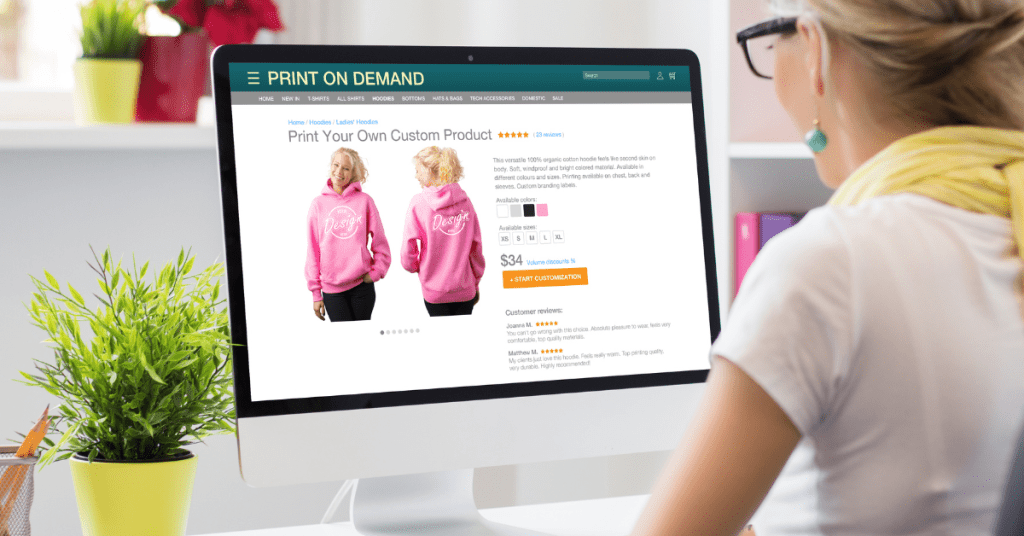Clothes are a basic necessity for everyone. You will never run out of demand in a clothing business. The fashion industry is growing very fast and many people are entering the market. If you are wondering how you can market your clothing brand effectively, read on.
With the popularity of the print-on-demand business model, starting a fashion or clothing brand has never been so easy. Anyone can start a clothing brand within a day without buying any inventory at all. All they need is to complete the product design and the online store building. The product will be created and shipped out by the supplier after the order is made.
Hence, the difference in building a successful clothing brand lies within the marketing strategy and effort.
Today, we will be sharing the steps for implementing the right marketing strategy for your clothing business.
If you are just starting out, you may check out Printify for your product supply and order processing.
Step 1: Identify Your Target Customer & Niche for Your Clothing Brand
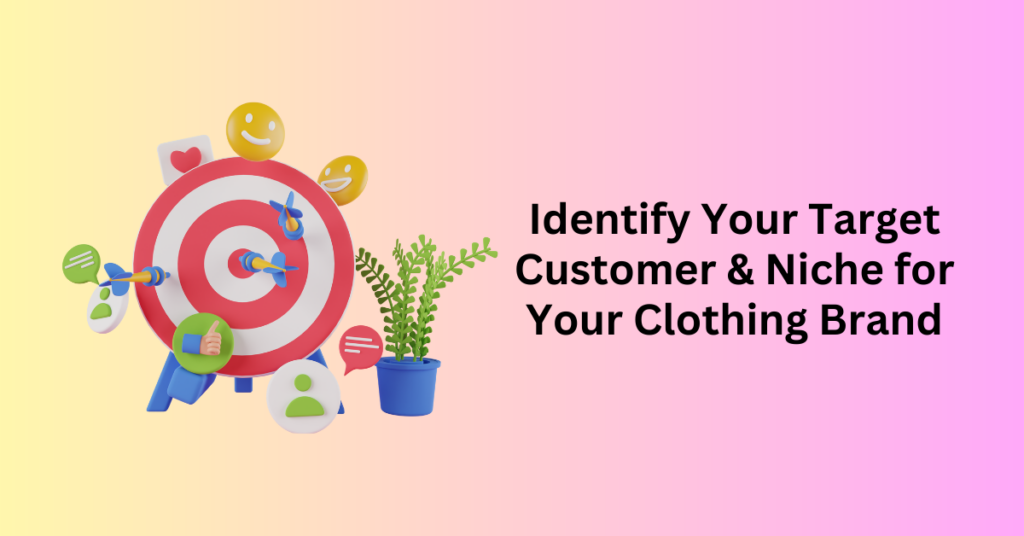
Let’s be realistic, not everyone will buy from you. And if you are trying to sell your products to everyone, you will end up not selling to anyone. Even if you have a huge product catalogue, you can’t match everyone in your brand message.
Hence, instead of focusing on the mass market, you should follow the 20/80 rules and focus on your target customer group.
By knowing your audiences, you can now design your product based on their interests and your marketing strategies will be targeting them as well. To do this, we will first create a dream customer avatar to visualize how our target customer will look like.
Create Your Dream Customer Avatar

To create a successful business, you need to know who your target customer is. The more you know about them, the better you can create products and marketing plan that is suitable for them.
Creating a customer avatar not only limits their interest, hobby but also everything about them. You need to know who they are, what they do, their habits, how’s their daily lifestyle and so on.
A dream customer is the group of people that you want to focus on when you are designing your product and your marketing effort. For instance, when you are creating a new product, your first question would be
“Will your dream customers want it”.
To identify your dream customer, it’s not to understand the basic information only like age range, sex and interest. You need to go beyond that by creating a customer avatar for your dream customer. Name it and then describe your dream customer in detail.
And ideally, it should include details like
- what time does he wake up in the morning?
- What time did he go out to work?
- How he is travelling to work?
- What’s his occupation?
- What time did he go home?
- How he went home?
- And, What does he do after work or at weekends?
In short, you should know their demographics, location and interests.
From there, you can then look for which forum, social media, or Facebook group they hang out the most online. And how you can connect with them and show your marketing message to them.
Identify Your Niche
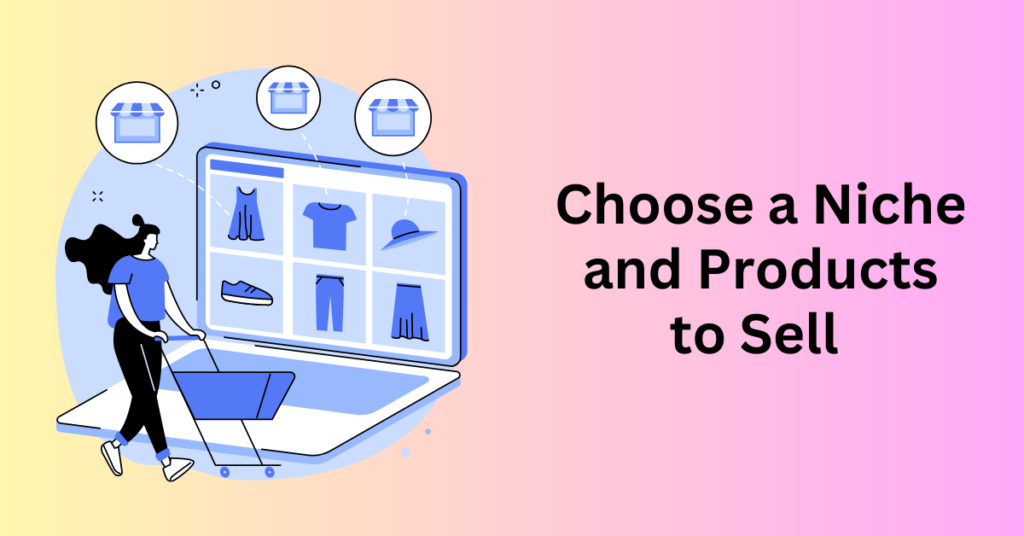
When building a clothing brand, you can start by focusing on a certain type of apparel like t-shirts, hoodies, short pants, jeans, sweaters and others. You can expand your product line to different categories of product as your business expand. However, your niche should remain the same.
A niche refers to a specialized segment or subset within a broader market or field. It represents a specific area, topic, or target audience that has unique needs, preferences, or characteristics. A niche is often characterized by its distinctiveness, focusing on a particular aspect or serving a specific group of individuals or businesses.
When defining your niche, you can look into the three core markets. Health, Wealth, and Love. And from there, look into each market and find its niche in it.
For example, for a clothing brand, you can be working in the love niche. Then niche down into pet lover and then, niche down further into dog lover or cat lover. And if you want to niche down further, you can go into dog types like poodle, corgi and others.
This is very important as if you are not niche down enough, and trying to serve everyone. You might end up not serving anyone. By knowing the problem, you can provide a better solution for it.
Step 2: Create a Strong Branding for Your Clothing Brand
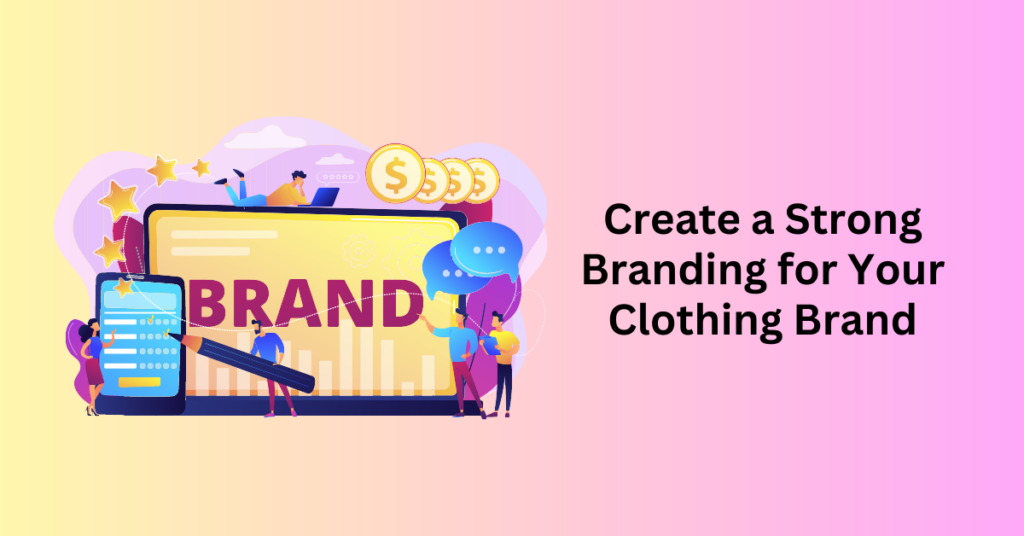
Next, building a clothing brand here is not building another business only. We are building a brand here. And your brand is where you can be identified and differentiated your business from your competitors.
Not only that, the brand value is where your customer pays more anyway. Look at those big brands, they are offering something premium, and their branding value makes them able to charge more for their products too.
Building a brand is not only a brand name and a logo but also your brand colour, company backstory, vision and mission, and memorable logo. Something your customers can remember about your business and resonates with them.
All these will help you to connect with your potential customers and existing customers well.
Create a Visual Identity
- Logo – Your business logo needs to be something easy to remember and noticed by others. Think about the big brands, what do you recognize about them? Their logo. That’s why you must create a simple yet memorable logo for your business. People can forget how your brand name spells, but they will remember your logo.
- Tagline – You can’t simply change your brand name because you want it to be unique. However, you can come out with a slogan which is simple and easy to memorize. Something that people can make fun of when they are talking to their friends. When they mentioned that, they will recognize your brand name.
- Brand Colour – A brand colour is a colour palette for your brand to differentiate your brand from your competitors. Normally we will choose three to five different colours that fit our brand message. You can think about one base colour that matches your brand, and then look for an accent and a neutral colour that matches your base colour. It can be a monochromatic, complementary or triad colour combination.
- Fonts – Fancy fonts might not work well for your branding. It can be part of your marketing content design, but as much as possible, try to avoid that. We tried using different fonts for the same piece of marketing content, the one easy to read and pleasant looking always win. Don’t overcomplicate your content, make it easy to read and point out your call to action button so people know what to do.
Step 3: Create And Launch Your Clothing Brand
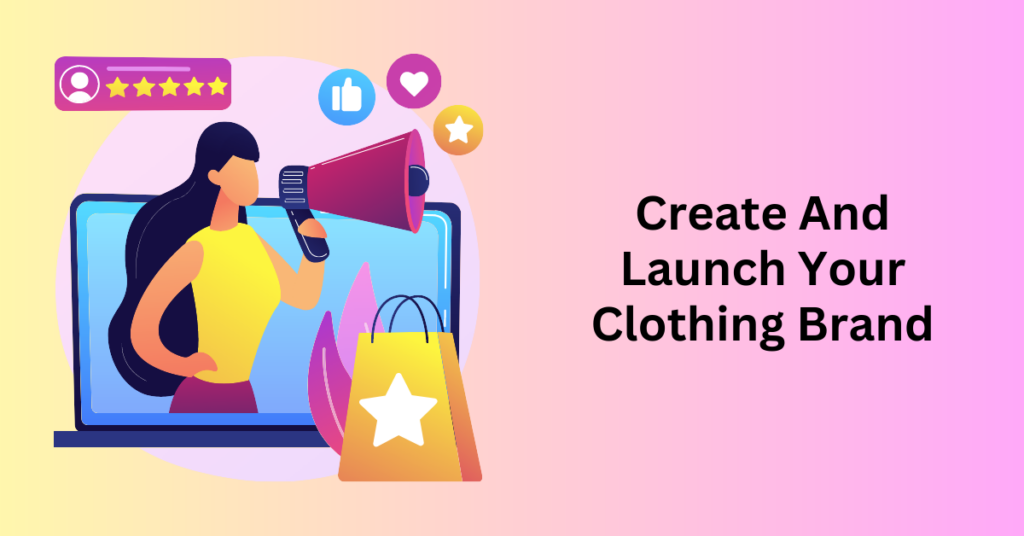
You will need a place to sell your products online. It can be your own store or through a marketplace. Not only that, you will need to decide whether are you going to invest in the inventory or not. Let’s see the options available for you to start.
Choose Your Business Model
In terms of building a clothing brand, if you would like to build and launch it fast without keeping a huge inventory, you can use the Print-On-Demand service.
Print-on-demand is a business model where you can access different products almost instantly. All you need is to create your design and upload it to your print-on-demand supplier. If you get an order, the order will be sent to the supplier for fulfilment and shipping.
With print-on-demand, you only need minimal up-front costs for your online store building and marketing. There are no inventory costs incurred. This will hugely lower your risk. And you can test different designs fast without having to wait for the sample or the stock is ready.
You can complete your design and publish it using the mockup instantly and start to sell. And when you found the winning design and would like to purchase it in bulk, then you can do it to lower your cost and control your order processing time.
Create and Launch Your Store
We will be focusing on eCommerce for this guide. So it means building your own online store or selling on a marketplace.
For selling on a marketplace, it’s easier to start but more competition as you are competing with other sellers on the marketplace. If you are using a platform like Etsy or Amazon, you will need to sign up for their seller account, integrate your print-on-demand supplier into your store and publish your product to start selling it.
And if you are building your own online store, you can use an eCommerce stores builder like Shopify, WooCommerce or other platforms. For a platform like Shopify, it is a fully hosted solution. You will need to sign up for their free trial to start building your store.
And for platforms like WooCommerce, it is a bit more complicated as you will need to have your own web hosting service and WordPress installed, then only you can install the WooCommerce plugin to add the eCommerce feature to it.
Features for Your Store
No matter which way you choose to take, remember a few important features that you need to build a successful online store.
- User-Friendly – Your online store should be fast loading and easy to navigate so your potential customers can get what they want easily. Not only that but always keep it simple and avoid having too many elements that will distract your potential customers from buying it.
- Optimized for SEO – SEO is a guideline to optimise your website to rank higher in search engine result pages. There are a few elements including keyword research, site title, tags and descriptions optimization. Getting your online store optimized for SEO will help provide a better user experience and get ranked higher on the search engine result.
- Use Quality Images – Product images are very important for an online clothing store. People can’t see, hold or feel your product. The only reference they have is your product image. Having a high-quality product image will let your potential customers able to see how your product looks and feels. Not only that, but it also shows your professionality.
- Attractive Banners – Your site banners and promotional banners are important to push your customer to make a purchase decision. You can offer free shipping or bundle discounts to get them to buy more from you.
Read more on How to Start an Online Store Without Inventory and Experience
Step 4: Crafting Your Marketing Plan for Your Clothing Brand

Having a clear marketing plan that you can follow will help to get your clothing brand to more people. You need to reach more people to get more visibility and awareness. Here are a few different marketing strategies you can implement for your clothing brand.
1. Social Media Marketing
Social media is undeniably one of the best marketing channels for your business. With social media built as an advertising platform, their aim is to get more users on it. Visual-based social media platforms like Facebook, Instagram, TikTok, YouTube and Pinterest are useful for promoting your clothing business.
You can reach millions of potential customers on the platforms and with the right groups or hashtags, you can reach your target customer group easily. You need to tap into the platform and show your products to them.
When creating your social media posts, use captivating images, videos, descriptions, and hashtags so people can find you easily. You need to provide value and increase your visibility in the niche so people will buy from you.
2. Email Marketing

Email marketing is one of the hidden gems that most business owners missed out on. In fact, email marketing is one of the highest ROI marketing strategies.
You can build your email list based on your existing customers to send them your new products newsletter and promotional newsletter. This is to get them to come back to your store and buy from you again.
Another email list will be based on your new leads or potential customers that have not bought from you yet. For these people, you can send them some new customer first-time discounts or onboarding email sequences to get them to know and understand your business more. This is to help them to resonate with your business better.
To write and manage your email list for your email marketing campaign, you will first need an autoresponder connected to your online store. With this, all new emails will be added to your list and managed automatically.
For example, when someone joins your list, it will trigger the sequence to send out the onboarding email sequence. And based on their responses or actions, they will be labelled in different sequences so that your message can align with them better.
Design Your Email
In your every email, there is only one goal. Get them to click on the link or CTA button, direct them to your product sales page and close your sales.
When writing your email, you need to first understand how your email looks in its inbox. Then, design your email accordingly.
- Your email arrives in their inbox
- They will see your email Sender name and Subject in their inbox
- They will read your Email Subject and decide whether open your email or not
See how they see and open your email.
You need to have a click-worthy or clickbait subject line so that they will want to click to read more of your email content. Next, in your email make sure you include a clear CTA link or button so they know where exactly to click.
3. Content Marketing
Content marketing is also effective to build your audiences and followers. It is used by most fashion brands to engage with their potential customers and existing customers.
Just look at how those fashion magazines, and blogs, share the latest fashion trends and what’s happening. You too can partner with fashion bloggers or professional writers to create content for your business.
The goal here is to create engaging content for your audiences. Your content includes blog posts, landing pages, videos, and more.
4. Affiliate Marketing

This might not be the most effective plan when you are just starting out. This is because, for affiliate marketing, you will need to prove yourselves before someone will promote your products.
Differing from influencer marketing, you only pay commissions for successful sales. And for the affiliate marketers, they will be paid only for successful referrals.
Affiliate marketing is a good way to market your business because you only paid for successful sales. Your profit is more predictable compared to running paid ads where you don’t know the result when you run ads.
5. Search Engine Marketing
Search engines processed hundreds of thousands of searches every second. Being able to rank on the right keywords means you will be getting free traffic to your online store daily.
This is why you should always try to rank for the keywords related to your clothing business. To do this, you need to first run keyword research to find the keywords that people are searching on the search engine.
Then, focus on optimizing your online store and product page around it to rank higher on the search engine result pages (SERPs).
And if you want to outrank your competitor faster, you can also run Google Ads and bid for the keywords. If you win the bid, your ads will be shown at the top of the search result.
6. Paid Ads
Other than search engines, you can also run paid ads on other platforms like social media or native ads platforms. By buying ads on social media, you can target the ads to the right audience based on their demographics, interests and locations.
The better your targeting and ads copywriting skills, the better your clickthrough rate and conversion rate.
Paid ads are fast and effective when you master the skill. Once you start paying, you will get traffic to your link.
7. Testimonials
Testimonials mean more than your sales letter. A sales letter is your text to sell your products. But testimonials are user-generated content after using your product.
You should always get reviews from your customers and include that on your sales page. This is very important as most potential customers will look at the testimonials before buying something.
Step 5: Test, Analyze and Optimize
Your job doesn’t end there after you launch your online store. You need to keep reading your data and optimize your ads, sales page, content, and marketing strategy to increase your conversion rate.
The same sales page with different titles and colours might have different conversion rates as well. You need to always split test to find the winning copy.
Not only that, you need to know what’s happening in the industry and what your competitors are doing to stay ahead of the latest trend.
Step 6: Scale Your Clothing Brand
When your business grows and you are ready to expand your team, you can always hire more staff in-house to scale your business. However, you should be careful when scaling your business to avoid over-scaling. Many businesses faced this problem when scaling. They scale too fast without understanding the market and customers properly.
If your front end is scaled too fast, you might end up having a fulfilment issue. However, you can resolve this easily with print-on-demand by assigning more suppliers for your product. This is why print-on-demand is good when you are starting and scaling.
Another issue would be your support team not being able to catch up. When you have too many orders, you need to have teams to handle support issues as well. Else, you might end up with returns and customer dissatisfaction.
Final Thoughts – How to Start and Market a Clothing Brand in 6 Steps
Starting a clothing brand is not hard with the available resource but marketing it and getting sales requires a clear plan and dedication.
You can choose to start with your own eCommerce store or sell your product on a marketplace. With the print-on-demand business model, you can start your clothing empire in no time.





